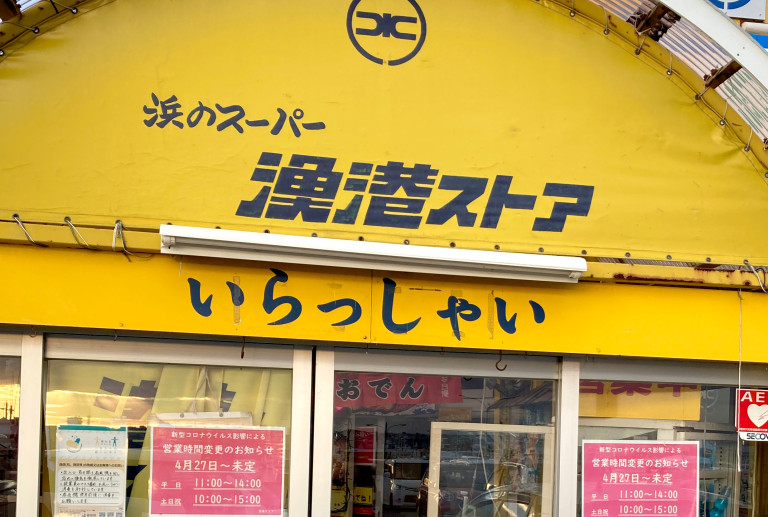
Italian-style Japanese? Or Japanese-style Italian? We just couldn’t decide.
Our Japanese-language reporter Mr. Sato recently made a trip to the northern city of Hachinohe in Aomori, which, he learned, is the prefecture with the most soba restaurants in all of Japan. With locally produced brands like Hashikami Wase soba and tons of local dishes that use the noodle, soba has been considered a prefectural food for a long time, which explains why it’s such a popular menu item.
Of course, Mr. Sato, one of our resident foodies, made sure to eat some soba while he was in Aomori. In fact, while exploring Tatehana Harbor, he happened to find a very unexpected soba dish: Italian Soba! Japanese buckwheat noodles with Italian flavors…would that even be good?
Italian Soba (and Udon) was offered at a fish store near Tatehana Harbor called Hama no Supermarket Gyoko Store (“Beach Supermarket Harbor Store”), but though it calls itself a supermarket, the place mainly sells soba and udon omiyage, or food souvenirs.
They also have a little kitchen that sells soba and udon dishes, and that’s where Mr. Sato found the Italian Soba hidden among 26 other kinds of soba and udon dishes.
The menu had several peculiarities. For example, the picture of the “Kids’ Soba/Udon” showed an American flag stuck into the egg, which was mysterious, and the 27th item was simply a clipart picture with the words “Searching for a New Dish”.
The most popular dish was No. 10, the Vegetable Tempura Soba/Udon, which looked as delicious in its simplicity as everything else on the menu. But what caught Mr. Sato’s eye was most certainly No. 6: Italian (Style) Soba/Udon. Not only did this item on the menu have nice flashy red, white, and green text over a green box, but it was aggressively advertised on a separate poster in front of the store.
▼ “(Tomato and Garlic) Italian (Style) Soba/Udon for the beach. Perfect for the beach! Healthy. (Italian Soba.) Limited availability. 600 yen (US$4.25).”
Three times was “Perfect for the beach!” written, in three different sizes in three different colors–so apparently they really wanted to drive the point home. And if the giant Italian flag as the background wasn’t enough to tell you this soba is Italian-inspired, then the red, green, and white letters and tiny Italian flags carried by little figures in green and red should tip you off.
In any case, Mr. Sato didn’t hesitate to order the soba version, though he was quite unsure of what to expect. It came on a tray lined with a cloth decorated with tomatoes! How cute.
It looked a lot more Italian than Mr. Sato expected, with a spoonful of very rich-looking tomato sauce plopped right on top.
They’d even added a little bit of what Mr. Sato thought was Genovese sauce, which made this, in Mr. Sato’s eyes, a pretty serious attempt at Italian food. Mr. Sato had imagined it would be more like a pasta dish with copious amounts of sauce and cheese, but it definitely had a much more simplistic Italian feel to it. But would this tomato sauce actually taste good with soba?
Underneath the noodles was a broth that looked very similar to the same type of tsuyu broth you’d get with ordinary Japanese-style soba dishes. That made this dish even more puzzling. It was neither a Japanese-style Italian dish nor an Italian-style Japanese dish, but it somehow managed to combine the two into something completely new.
Mr. Sato gave it a good mix and took a bite. “Oh, it’s good! Simple, but good…No, it’s actually really good!”
Just as the dish seemed unable to make up its mind about what it wanted to be, neither could Mr. Sato decide how delicious it was. The tomatoes and the soba weren’t actually weird together, and Mr. Sato quickly became accustomed to the combination of tsuyu broth with tomatoes. Gradually, it turned from a strange dish into a really tasty one.
He’d heard before that Italian food and Japanese food actually have an affinity with one another, and that you can switch ingredients here or there to make any dish into a tasty fusion dish, but he had never expected it to taste so good. It was like the pasta ramen our other reporter discovered in Croatia. Either way, the acidity of the tomatoes added a nice freshness to the dish, which would be really nice to cool down with in the heat of summer.
Ah…so that’s why they’d suggested it was “Perfect for the beach!”
If you find yourself in Hachinohe, definitely check out Hama no Supermarket Gyoko Store. And don’t forget to check out another one of Aomori’s claims to fame: cracker crusts!
Shop/Restaurant Information
Hama no Super Gyoko Store / 浜のスーパー 漁港ストア
Aomori-ken Hachinohe-shi Shinminato 3-4-20
青森県八戸市新湊3-4-20
Hours: Weekdays: 11 a.m. to 2 p.m., Weekends/Holidays: 10 a.m. to 3 p.m.. Morning market open from 7 a.m. to 3 p.m.
Open every day
Images © SoraNews24
● Want to hear about SoraNews24’s latest articles as soon as they’re published? Follow us on Facebook and Twitter!
[ Read in Japanese ]

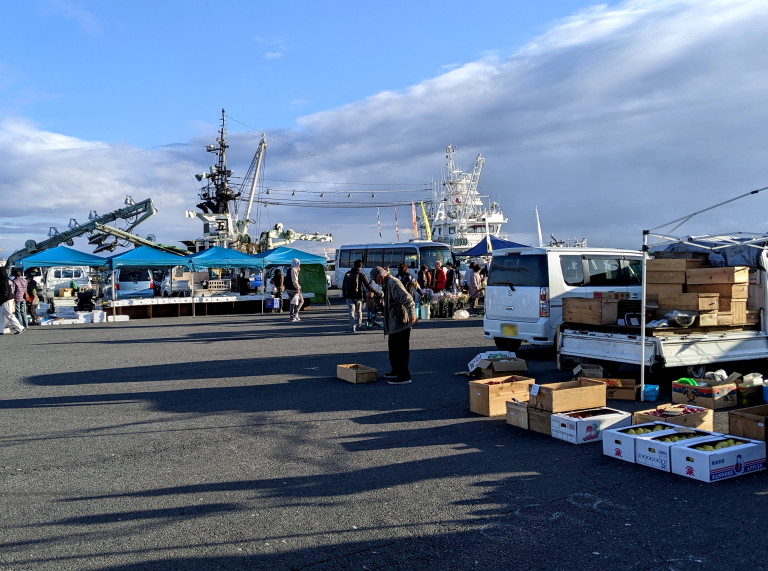
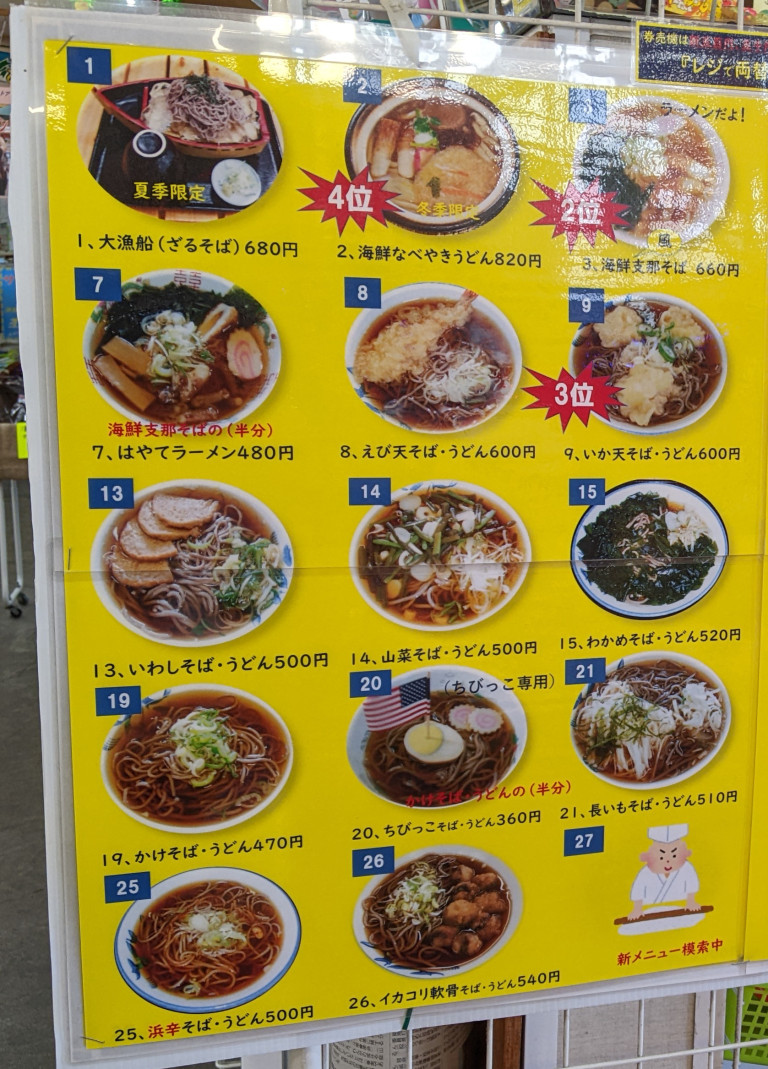
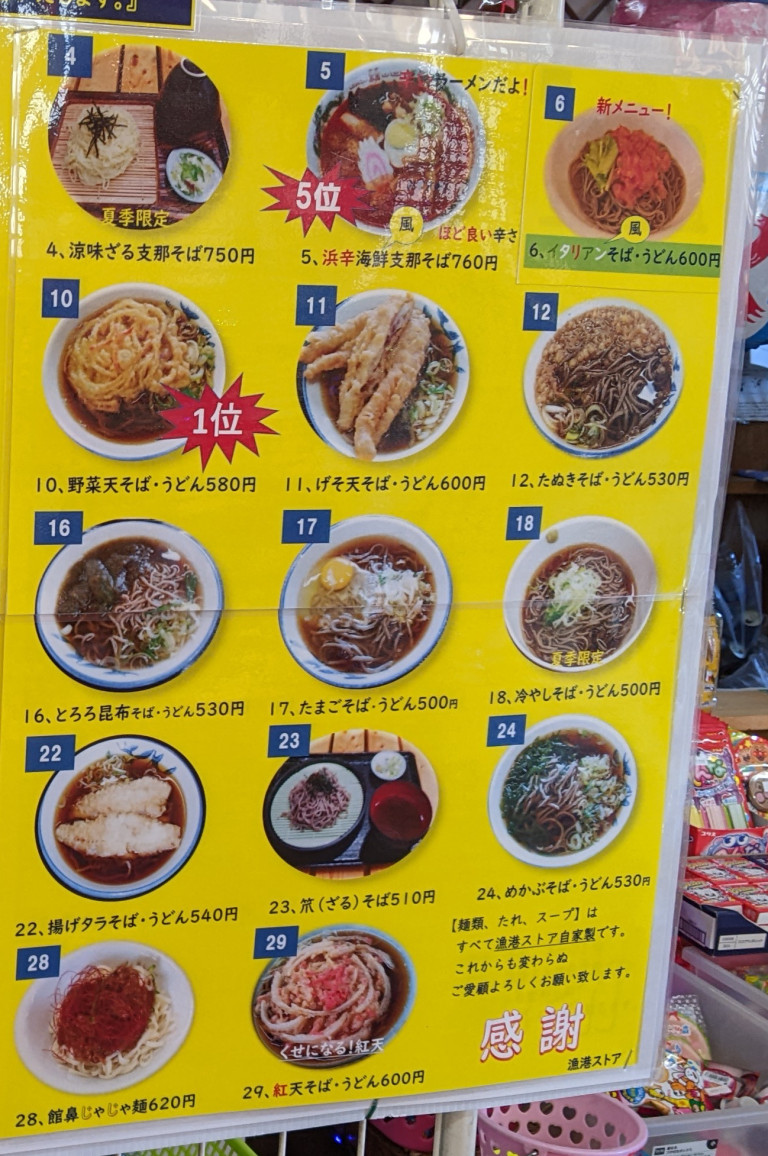
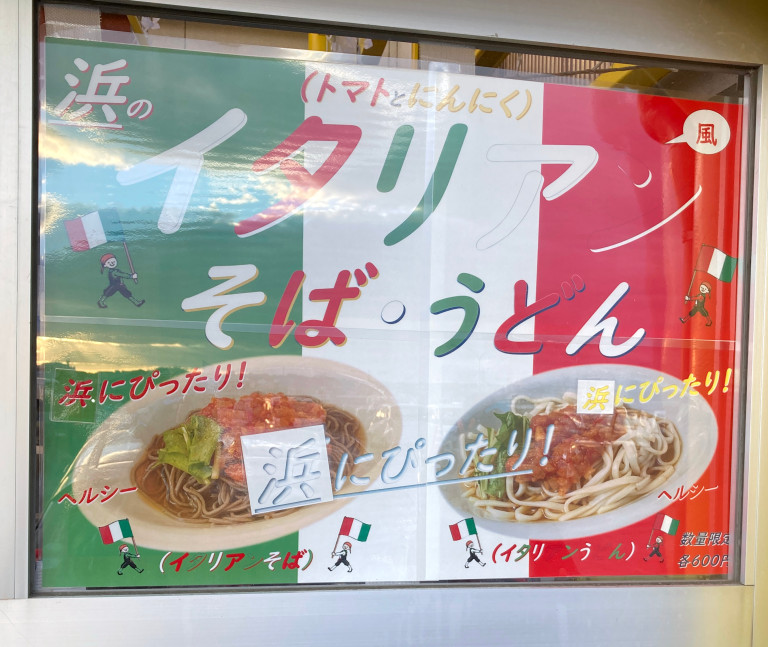
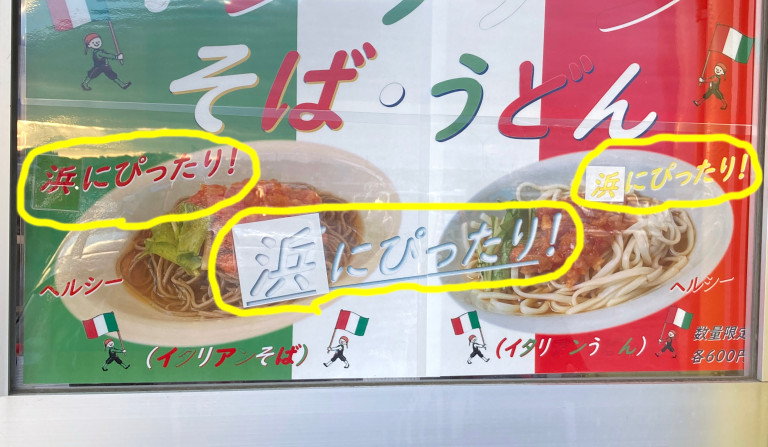
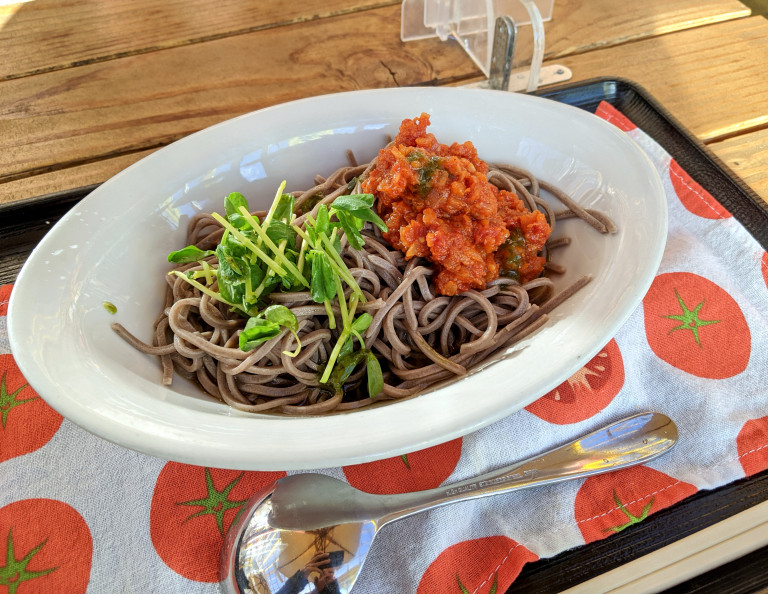
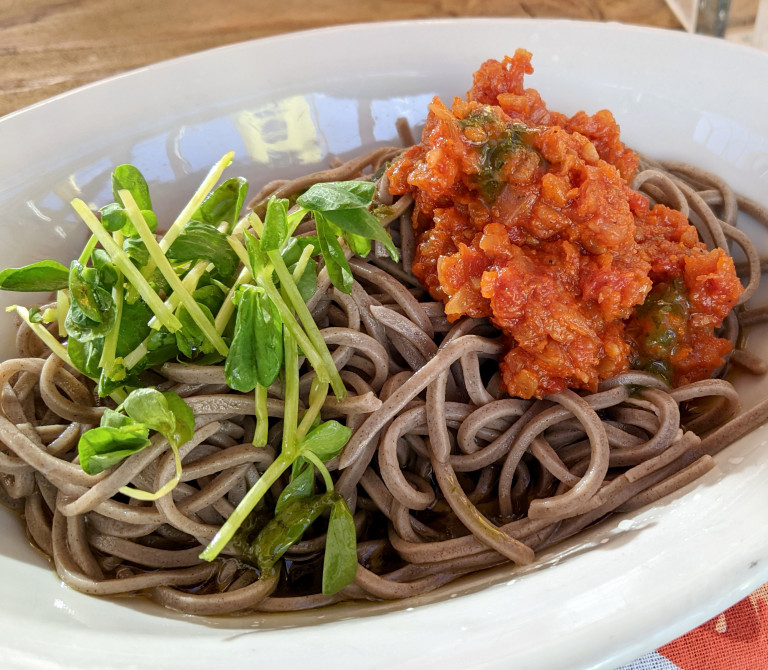
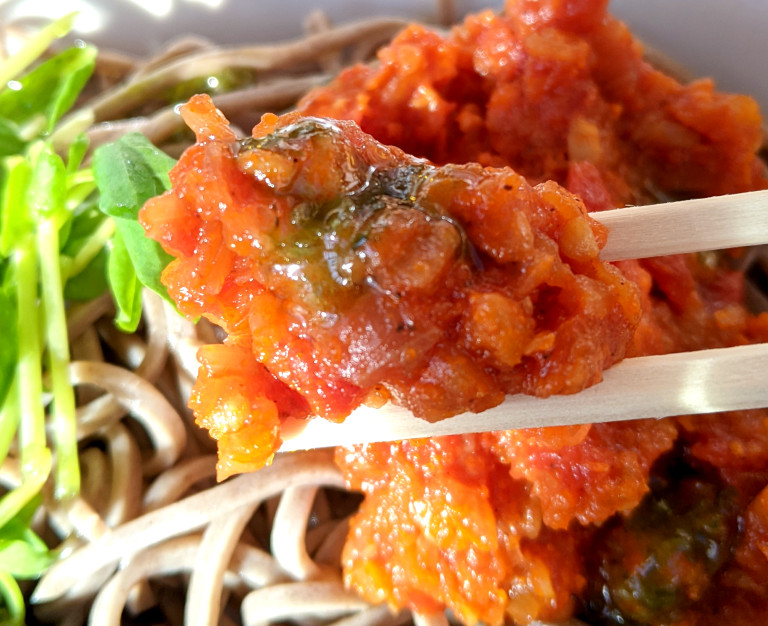
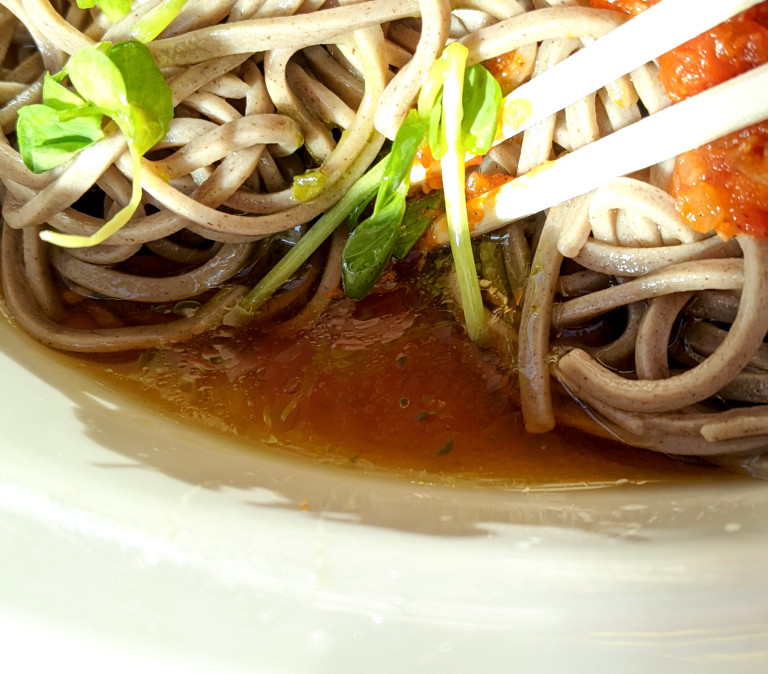
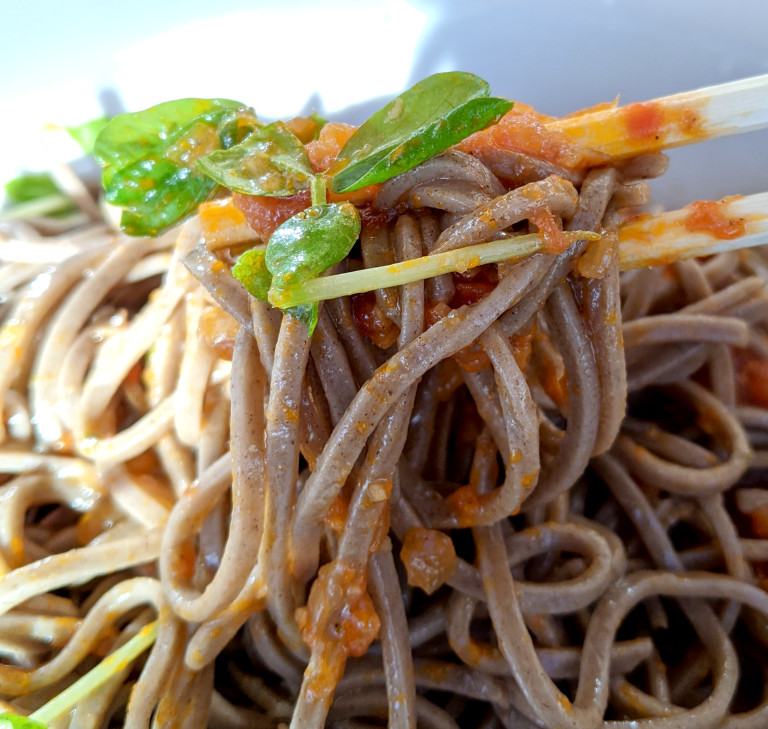
 Kakiage towers and Italian soba? We try out a unique soba restaurant in Tokyo
Kakiage towers and Italian soba? We try out a unique soba restaurant in Tokyo Marvelous Soba: Colour-changing noodle broth creates a twist ending to your meal
Marvelous Soba: Colour-changing noodle broth creates a twist ending to your meal Popcorn shrimp udon, as in noodles with popcorn and shrimp, now on the menu in Tokyo【Taste test】
Popcorn shrimp udon, as in noodles with popcorn and shrimp, now on the menu in Tokyo【Taste test】 Why did this stand-and-eat soba noodle shop in Tokyo open in the middle of the pandemic?
Why did this stand-and-eat soba noodle shop in Tokyo open in the middle of the pandemic? Saga Prefecture’s hidden gem of a soba restaurant offers scrumptious, full course soba meals
Saga Prefecture’s hidden gem of a soba restaurant offers scrumptious, full course soba meals Foreigner’s request for help in Tokyo makes us sad for the state of society
Foreigner’s request for help in Tokyo makes us sad for the state of society Red light district sushi restaurant in Tokyo shows us just how wrong we were about it
Red light district sushi restaurant in Tokyo shows us just how wrong we were about it Pokémon Sleep camping suite and guestrooms coming to Tokyo Hyatt along with giant Snorlax burgers
Pokémon Sleep camping suite and guestrooms coming to Tokyo Hyatt along with giant Snorlax burgers McDonald’s new Happy Meals offer up cute and practical Sanrio lifestyle goods
McDonald’s new Happy Meals offer up cute and practical Sanrio lifestyle goods Historical figures get manga makeovers from artists of Spy x Family, My Hero Academia and more
Historical figures get manga makeovers from artists of Spy x Family, My Hero Academia and more Japan’s massive matcha parfait weighs 6 kilos, contains hidden surprises for anyone who eats it
Japan’s massive matcha parfait weighs 6 kilos, contains hidden surprises for anyone who eats it Anime girl English teacher Ellen-sensei becomes VTuber/VVTUber and NFT
Anime girl English teacher Ellen-sensei becomes VTuber/VVTUber and NFT French Fries Bread in Tokyo’s Shibuya becomes a hit on social media
French Fries Bread in Tokyo’s Shibuya becomes a hit on social media Studio Ghibli releases new action figures featuring Nausicaä of the Valley of the Wind characters
Studio Ghibli releases new action figures featuring Nausicaä of the Valley of the Wind characters Japanese ramen restaurants under pressure from new yen banknotes
Japanese ramen restaurants under pressure from new yen banknotes All-you-can-drink Starbucks and amazing views part of Tokyo’s new 170 meter-high sky lounge
All-you-can-drink Starbucks and amazing views part of Tokyo’s new 170 meter-high sky lounge New private rooms on Tokaido Shinkansen change the way we travel from Tokyo to Kyoto
New private rooms on Tokaido Shinkansen change the way we travel from Tokyo to Kyoto Studio Ghibli glasses cases let anime characters keep an eye on your spectacles
Studio Ghibli glasses cases let anime characters keep an eye on your spectacles Tokyo Tsukiji fish market site to be redeveloped with 50,000-seat stadium, hotel, shopping center
Tokyo Tsukiji fish market site to be redeveloped with 50,000-seat stadium, hotel, shopping center Beautiful Ghibli sealing wax kits let you create accessories and elegant letter decorations【Pics】
Beautiful Ghibli sealing wax kits let you create accessories and elegant letter decorations【Pics】 Studio Ghibli releases Kiki’s Delivery Service chocolate cake pouches in Japan
Studio Ghibli releases Kiki’s Delivery Service chocolate cake pouches in Japan New definition of “Japanese whiskey” goes into effect to prevent fakes from fooling overseas buyers
New definition of “Japanese whiskey” goes into effect to prevent fakes from fooling overseas buyers Our Japanese reporter visits Costco in the U.S., finds super American and very Japanese things
Our Japanese reporter visits Costco in the U.S., finds super American and very Japanese things Studio Ghibli unveils Mother’s Day gift set that captures the love in My Neighbour Totoro
Studio Ghibli unveils Mother’s Day gift set that captures the love in My Neighbour Totoro New Japanese KitKat flavour stars Sanrio characters, including Hello Kitty
New Japanese KitKat flavour stars Sanrio characters, including Hello Kitty More foreign tourists than ever before in history visited Japan last month
More foreign tourists than ever before in history visited Japan last month New Pokémon cakes let you eat your way through Pikachu and all the Eevee evolutions
New Pokémon cakes let you eat your way through Pikachu and all the Eevee evolutions Sales of Japan’s most convenient train ticket/shopping payment cards suspended indefinitely
Sales of Japan’s most convenient train ticket/shopping payment cards suspended indefinitely Sold-out Studio Ghibli desktop humidifiers are back so Totoro can help you through the dry season
Sold-out Studio Ghibli desktop humidifiers are back so Totoro can help you through the dry season Japanese government to make first change to romanization spelling rules since the 1950s
Japanese government to make first change to romanization spelling rules since the 1950s Ghibli founders Toshio Suzuki and Hayao Miyazaki contribute to Japanese whisky Totoro label design
Ghibli founders Toshio Suzuki and Hayao Miyazaki contribute to Japanese whisky Totoro label design Doraemon found buried at sea as scene from 1993 anime becomes real life【Photos】
Doraemon found buried at sea as scene from 1993 anime becomes real life【Photos】 Tokyo’s most famous Starbucks is closed
Tokyo’s most famous Starbucks is closed One Piece characters’ nationalities revealed, but fans have mixed opinions
One Piece characters’ nationalities revealed, but fans have mixed opinions We asked a Uniqlo employee what four things we should buy and their suggestions didn’t disappoint
We asked a Uniqlo employee what four things we should buy and their suggestions didn’t disappoint Princesses, fruits, and blacksmiths: Study reveals the 30 most unusual family names in Japan
Princesses, fruits, and blacksmiths: Study reveals the 30 most unusual family names in Japan What does a family restaurant in the middle of nowhere, Hokkaido, serve? We find out
What does a family restaurant in the middle of nowhere, Hokkaido, serve? We find out Which noodles, other than Okinawa soba, pair best with Okinawa soba broth?【Taste Test】
Which noodles, other than Okinawa soba, pair best with Okinawa soba broth?【Taste Test】 Robot-operated soba stand in Tokyo is too busy for its machine chef to keep up with
Robot-operated soba stand in Tokyo is too busy for its machine chef to keep up with New Japanese dish combines two summertime greats – soba noodles and kakigori shaved ice
New Japanese dish combines two summertime greats – soba noodles and kakigori shaved ice We check out Kawaichi, a crazy good soba shop in Akihabara
We check out Kawaichi, a crazy good soba shop in Akihabara One minute is all you need to make this popular instant noodle meal from Okayama【SoraKitchen】
One minute is all you need to make this popular instant noodle meal from Okayama【SoraKitchen】 Tokyo restaurant offers “DIY Tempura Bowls,” so of course we had to go check it out
Tokyo restaurant offers “DIY Tempura Bowls,” so of course we had to go check it out “Hey, Japanese taxi driver, take us to the best Yaeyama soba noodles on Ishigaki Island!”
“Hey, Japanese taxi driver, take us to the best Yaeyama soba noodles on Ishigaki Island!” New famous food of Akihabara! Reiwa garlic chive ramen is delicious two times per meal
New famous food of Akihabara! Reiwa garlic chive ramen is delicious two times per meal Tokyo’s spicy cod roe ice cream: An unexpected dessert that tastes about like what you’d expect
Tokyo’s spicy cod roe ice cream: An unexpected dessert that tastes about like what you’d expect We eat an Italian-inspired lobster curry…at a cheap curry chain!
We eat an Italian-inspired lobster curry…at a cheap curry chain! Shibuya City Office serves up insanely cheap soba noodles, but are they any good?
Shibuya City Office serves up insanely cheap soba noodles, but are they any good? Sushi for breakfast? Our under-1,000-yen breakfast with Hama Sushi’s new morning menu
Sushi for breakfast? Our under-1,000-yen breakfast with Hama Sushi’s new morning menu How to turn a classic Japanese noodle dish into Studio Ghibli’s Totoro
How to turn a classic Japanese noodle dish into Studio Ghibli’s Totoro We try cooking yakisoba with real Japanese buckwheat soba【SoraKitchen】
We try cooking yakisoba with real Japanese buckwheat soba【SoraKitchen】 Asakusa luxury – the best matsutake soba we’ve ever had at a price that can’t be beat
Asakusa luxury – the best matsutake soba we’ve ever had at a price that can’t be beat
Leave a Reply